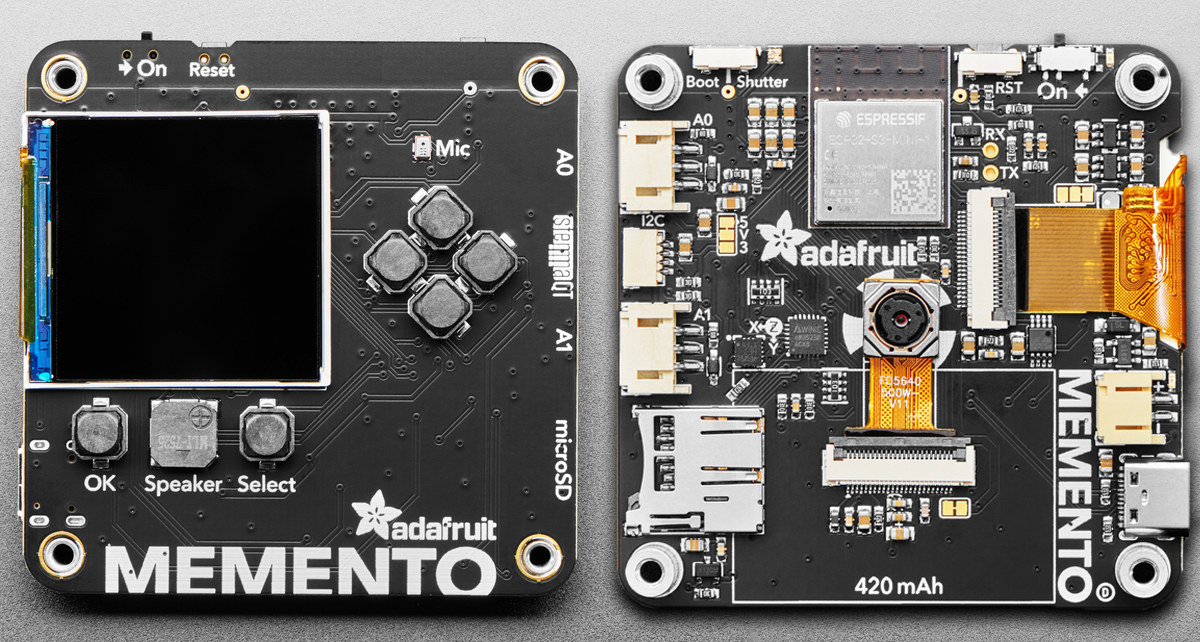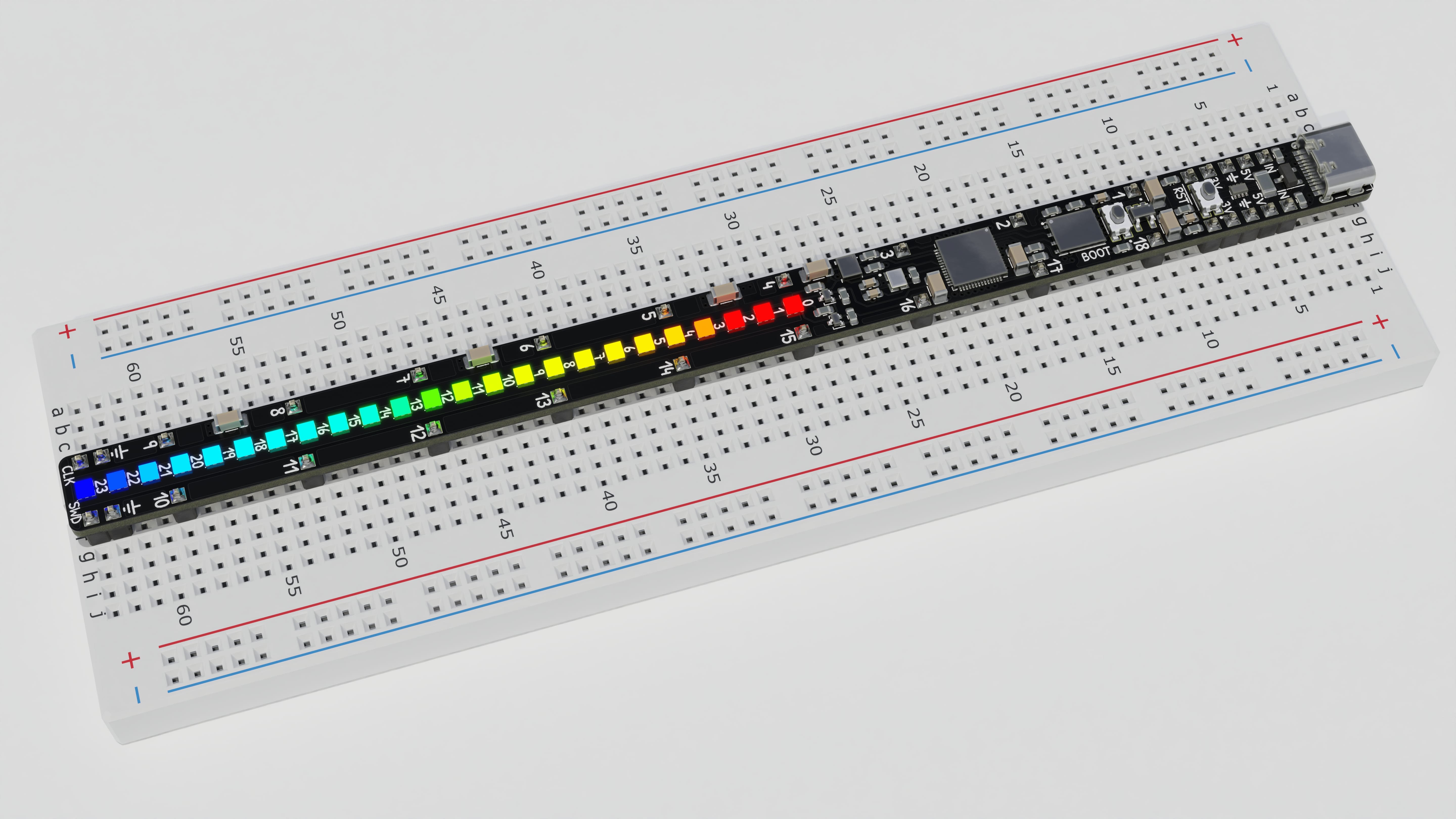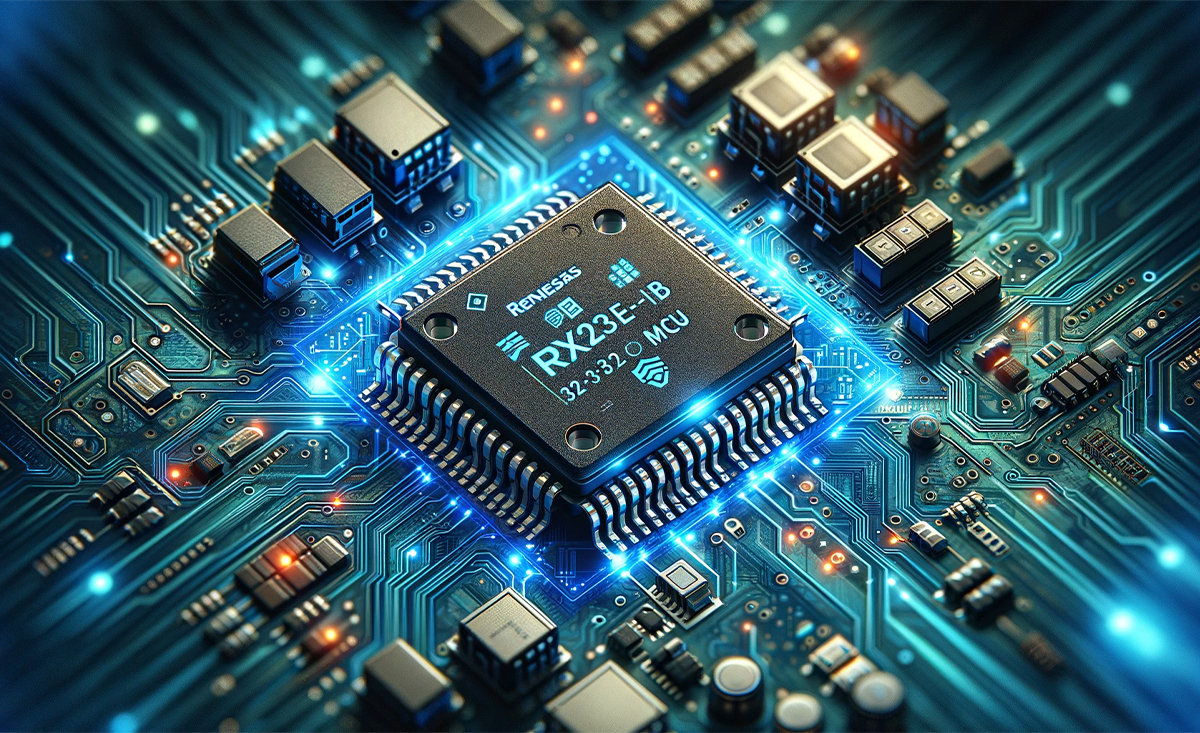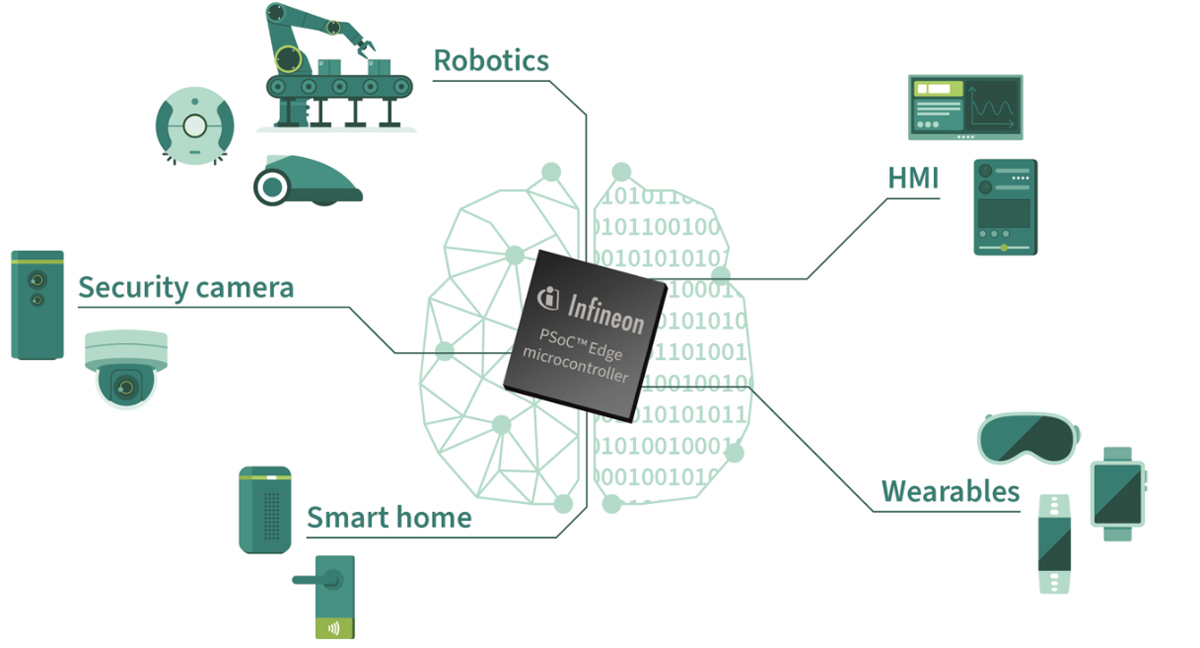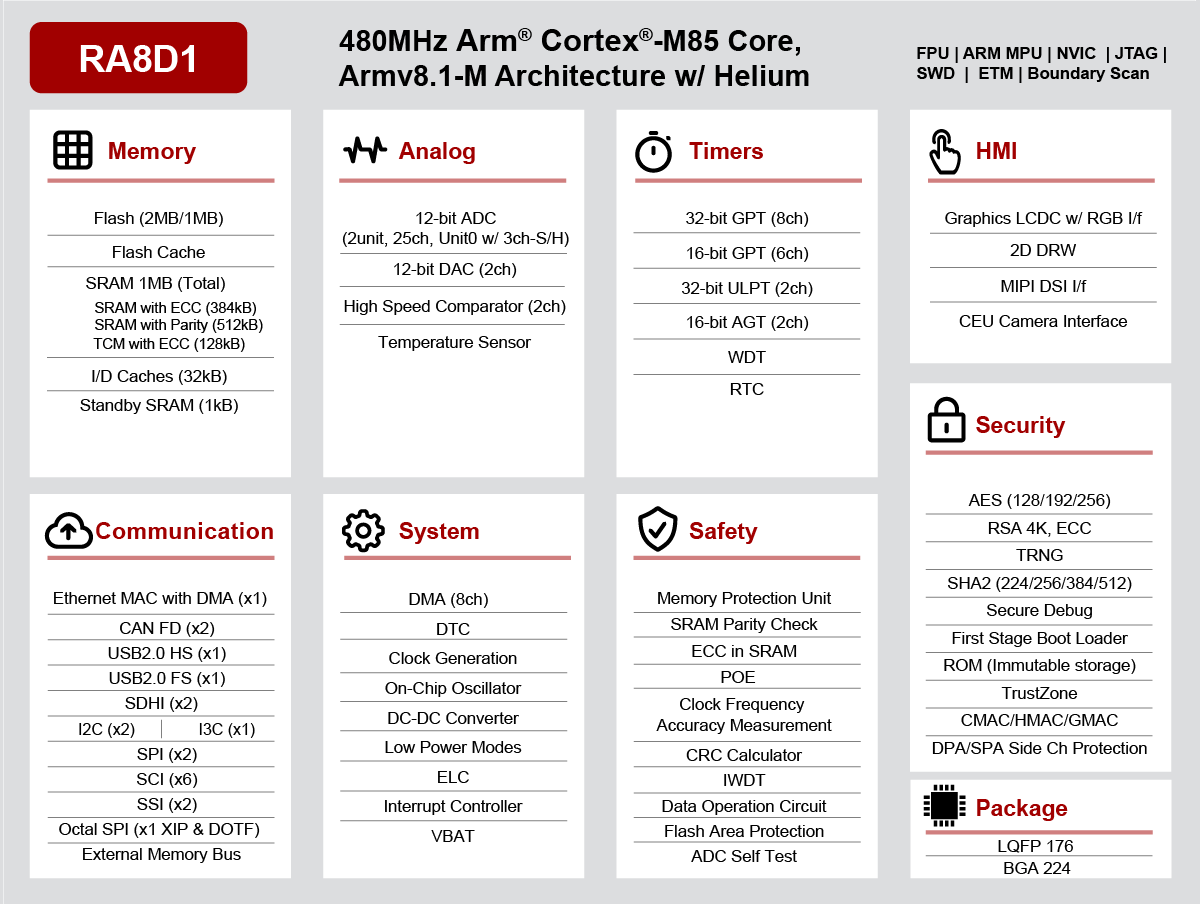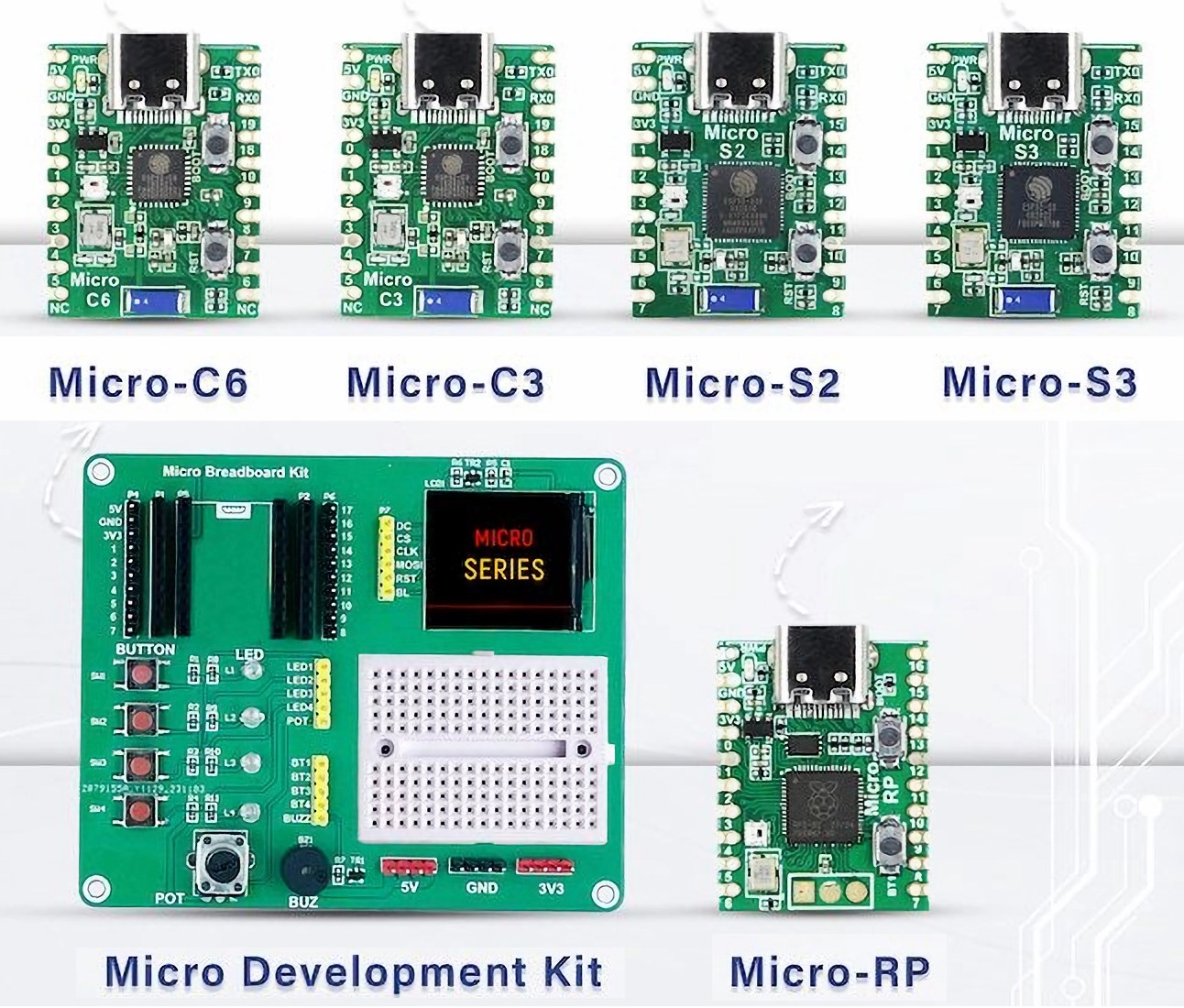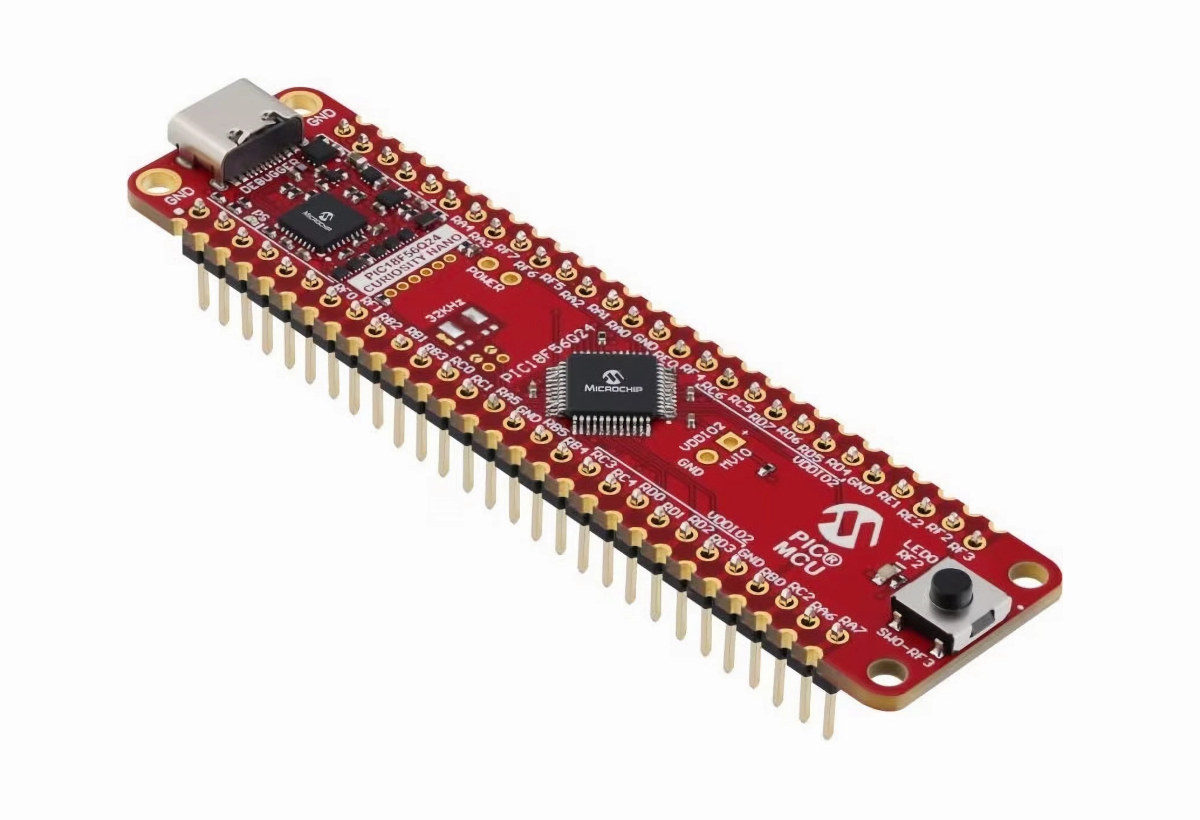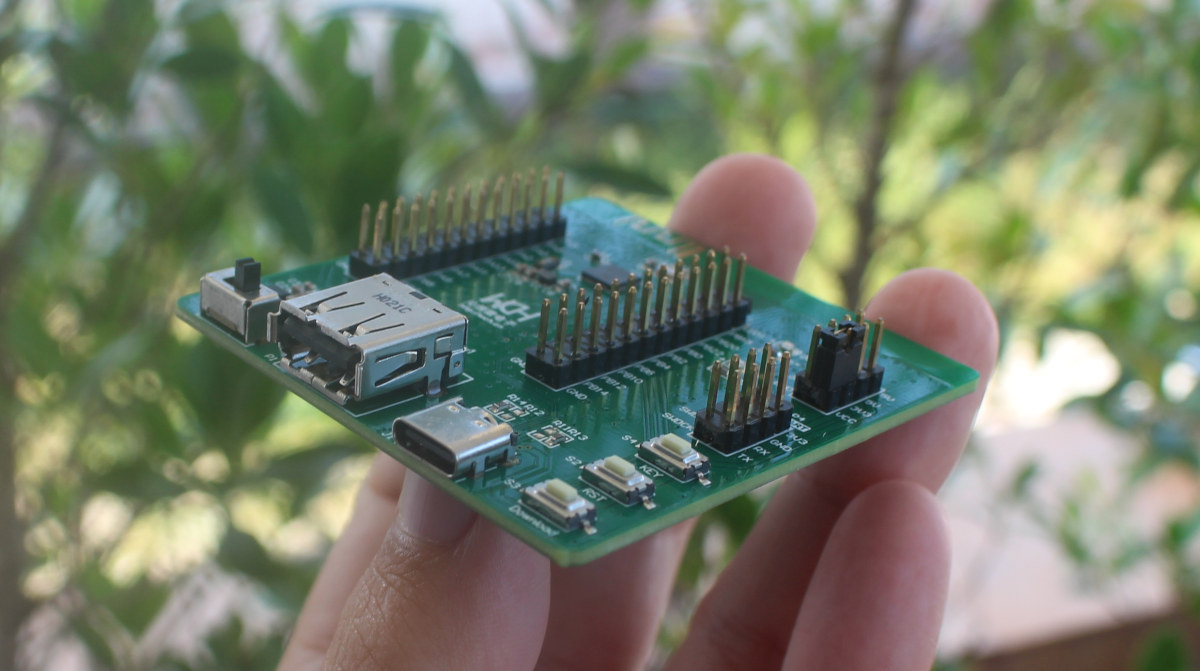Adafruit’s new MEMENTO – Bare Board Camera module is powered by the ESP32-S3 and can be programmed with CircuitPython or Arduino. The module includes a camera with an OV5640 sensor which features auto-focus capabilities and the board includes a 1.54″ 240×240 Color TFT to display the images. Previously we have covered many ESP32-based camera modules like the TinyML-CAM, the Arduino Nicla Vision, TTGO T-Camera, and many other camera modules that feature the OV5640 sensor you can check those out if interested. Features and Specifications of the MEMENTO ESP32 Camera Module: Processing and Connectivity ESP32-S3 Module Dual-core 240MHz Tensilica processor 8 MB Flash, 2 MB PSRAM WiFi and BTLE capabilities Camera and Display OV5640 Camera Module 5MP sensor 72-degree view Autofocus JPEG encoder 1.54″ Color TFT Display with 240×240 resolution Storage – MicroSD card slot (SPI) Ports and Expansion Two Digital/Analog Stemma Ports – JST PH-3 connectors for A0, A1, power, […]
Raspberry Breadstick – A RP2040-based development board in a quirky form factor
The Raspberry Breadstick is a breadstick-shaped development board that is designed for ease of use. Unlike other development boards, the Breadstick is built to fit directly on your breadboard and interface with the other electronic components in your project without the need for lengthy jumper wires. It serves to deliver a prototype that is neat, straightforward, and easy to troubleshoot. It is based on Raspberry Pi’s debut microcontroller, the RP2040, which is the same MCU chip that powers the Raspberry Pi Pico and several other boards. We recently covered the Waveshare RP2040-PiZero that comes in the Pi Zero’s form factor. The RP2040 is cheap and supports C/C++, MicroPython, and CircuitPython. The Breadstick has other interesting features such as a lineup of 24 addressable RGB LEDs with fast refresh rates, a 6-axis inertial measurement unit for collecting acceleration and rotation data, as well as 16MB of external flash storage for your […]
Renesas’ RX23E-B MCU offers a low-drift 24-bit A/D converter with a 125 kSPS sampling rate
Renesas’ new RX23E-B MCU offers a low-drift 24-bit delta-sigma A/D converter with up to 125 kS/S Sampling Rate – That is eight times faster than its predecessor. This controller is clocked at 32-MHz and offers up to 256 KB Flash memory rail-to-rail programmable gain instrumentation amplifiers, ±10 V input pins, a low-drift voltage reference, and on-chip excitation current sources. This year Renesas introduced a range of new products including, the RZ/T2L Arm Cortex-R52 with an EtherCAT controller, and the RA4E2 and RA6E2 Arm Cortex-M33 MCUs for wearables and appliances. Renecus also released its first 32-bit RISC-V CPU this year, you can check those out if interested. Features of Renesas’ RX23E-B MCU: CPU: 32 MHz 32-bit RXv2 core Includes FPU/DSP instructions Memory: 256 KB code Flash 8 KB data Flash 32 KB SRAM 24-bit Delta-Sigma ADC with PGA: High data rate: max 125 kSPS Ultra-low noise: 190 nVRMS at 977 SPS/gain=64 […]
Infineon launches PSoC Edge Cortex-M55/M33 microcontrollers for enhanced AI and ML applications
Infineon’s new PSoC Edge series of microcontrollers integrates the Arm Cortex-M55 core with Helium DSP and the Ethos U55 NPU unit for advanced AI tasks. It also includes a power-efficient Arm Cortex-M33 core paired with an NNLite(DSP/NPU) for simpler AI tasks. This setup allows the device to be more efficient in varying load conditions. Infineon’s PSoC lineup is a configurable microcontroller powered by Arm Cortex-M4, Cortex-M3, or Cortex-M0+ cores. The main USP (Unique Selling Point) of this lineup is its configurable digital and analog components. This feature makes them somewhat similar to an FPGA, but an FPGA is far more difficult to program than these microcontrollers and they are also very power-hungry. The device is equipped with advanced HMI and “Always-on” capability. “Always-on” is a feature of this device to constantly monitors and responds to signals automatically, making it suitable for smart homes, security, wearables, robotics, and many more. Key […]
Renesas RA8D1 Arm Cortex-M85 SoC features LCD display interfaces, 2D graphics accelerator
Renesas RA8D1 is a new Arm Cortex-M85 microcontroller with graphics capabilities such as a 2D graphics accelerator and MIPI DSI and parallel RGB interfaces to connect an LCD that will make the chip suitable for HMI applications. Renesas introduced the world’s first Arm Cortex-M85 microcontroller with the RA8M1 just a few weeks ago, but the MCU has limited multimedia capabilities with just a 16-bit Capture Engine Unit (CEU) interface to connect a camera. The second member of the Renesas RA8 family fills this void with the RA8D1 microcontroller adding an LCD controller and a 2D graphics drawing engine on top of the CEU camera interface. Renesas RA8D1 specifications: MCU core – Arm Cortex-M85 clocked at 480 MHz with Helium MVE (M-Profile Vector Extension) with 32KB I/D caches, 12KB data flash Memory & Storage 1MB SRAM with TCM (128KB) 1MB to 2MB Flash memory 32-bit external SDRAM interface Display interfaces and […]
Microflex MCUs – Tiny USB development boards based on ESP32-S3, ESP32-S2, ESP32-C3, ESP32-C6, or Raspberry Pi RP2040 (Crowdfunding)
SB Components is back with yet another crowdfunding campaign this time with the Microflex MCUs USB development boards all with the same tiny form factor and offered with a choice of five microcontrollers namely Raspberry Pi RP2040, ESP32-S3, ESP32-S2, ESP32-C3, or ESP32-C6. Microflex MCUs share the same layout with a USB-C port for power and programming, a built-in RGB LED, two buttons for Boot and Reset/User, and two rows of 10-pin with through and castellated holes to access the GPIOs and power signals such as 5V, 3.3V, and GND. But they differ in terms of the processor used, wireless features, and available I/Os as shown in the table below which sadly lacks any information about the flash and eventual PSRAM… The illustration below includes some more details for the Micro-C6 with the main components, ports, and a pinout diagram. Programming the firmware for the ESP32-series can be done through the […]
Microchip PIC18-Q24 8-bit MCU focuses on security and supports Multi-Voltage I/O (MVIO)
The newly introduced Microchip PIC18-Q24 8-bit MCU implements security measures such as the Programming and Debugging Interface Disable (PDID) feature and optional support for an immutable bootloader, as well as support for Multi-Voltage I/O (MVIO) to interface with digital inputs or outputs at different operating voltages without the needs for level shifters. While it’s fun to find a new MCU platform that you can hack via serial, JTAG, or other debug interfaces, it can be a security issue, and the Microchip PIC18-Q24 aims to make that impossible by disabling programming and debugging interfaces and the 8-bit microcontroller also offers an option to make the bootloader impossible to modify once a specific configuration bit has been set. Microchip PIC18-Q24 key features and specifications: MCU core – 8-bit C compiler optimized RISC core @ up to 64 MHz Memory – Up to 4 KB of Data SRAM Memory Storage – Up to […]
Giveaway Week 2023 – WCH CH583M-R0 development board and some RISC-V microcontrollers
Early this year, WCH sent me a few of their RISC-V MCU boards and chips to thank me for writing about their products. I gave one for review with some chips but it went to review heaven, or in other words, no review was ever written. I also sold a couple locally, and since I don’t think I’ll ever have time for a review, we are now giving away the remaining boards and chips here and on CNX Software Thailand. Today’s giveaway is the WCH CH583M-R0-1v1 board, also known as CH583EVT or CH583M-EVT-R0, based on the CH583 RISC-V Bluetooth 5.3 LE microcontroller that exposes all I/Os from the chip, a few buttons, and USB ports, and also features an SWD/UART header for debugging. You’ll find the documentation, code samples, an Android app and other resources to get started on GitHub. I’ll also throw all the remaining chips I have left […]


